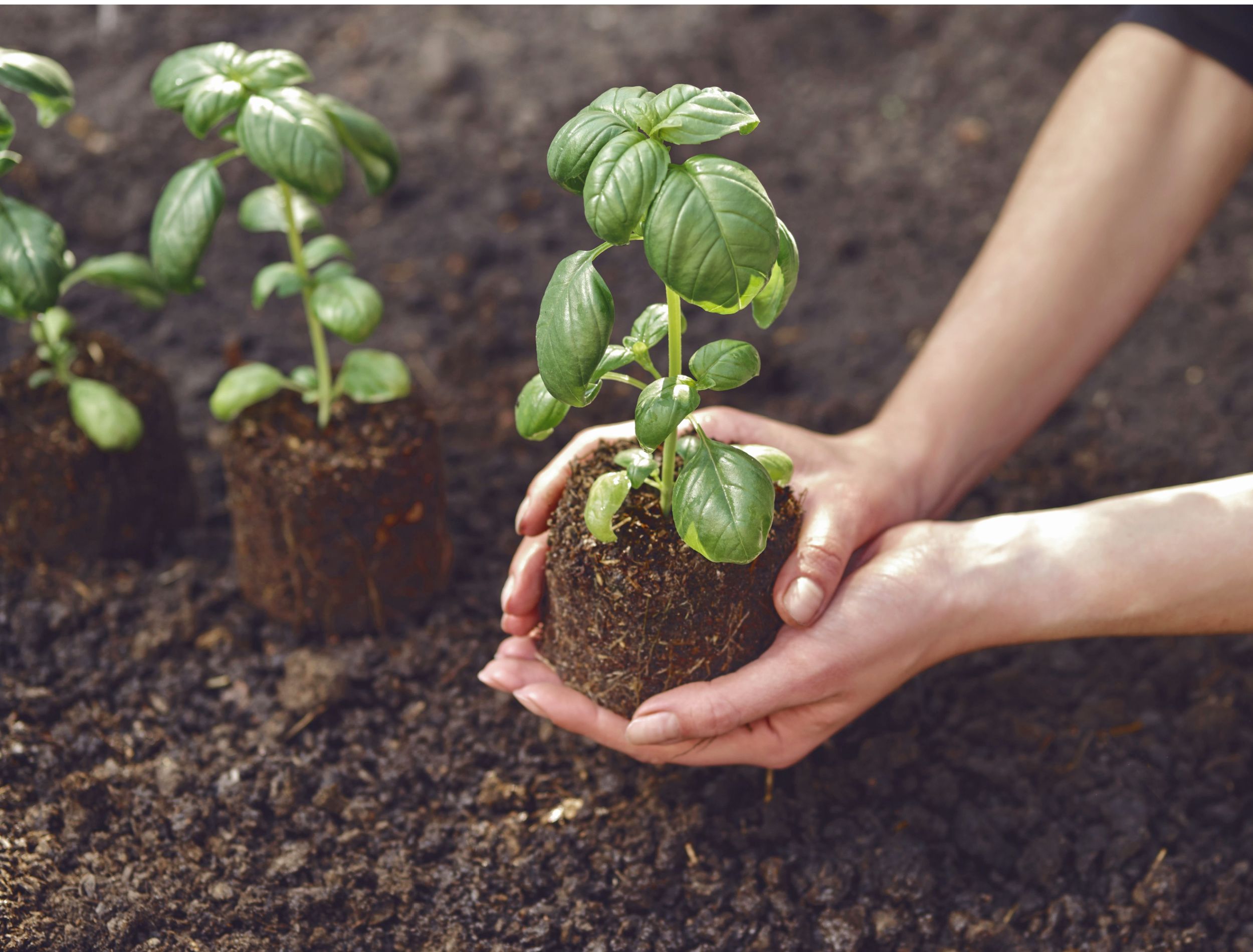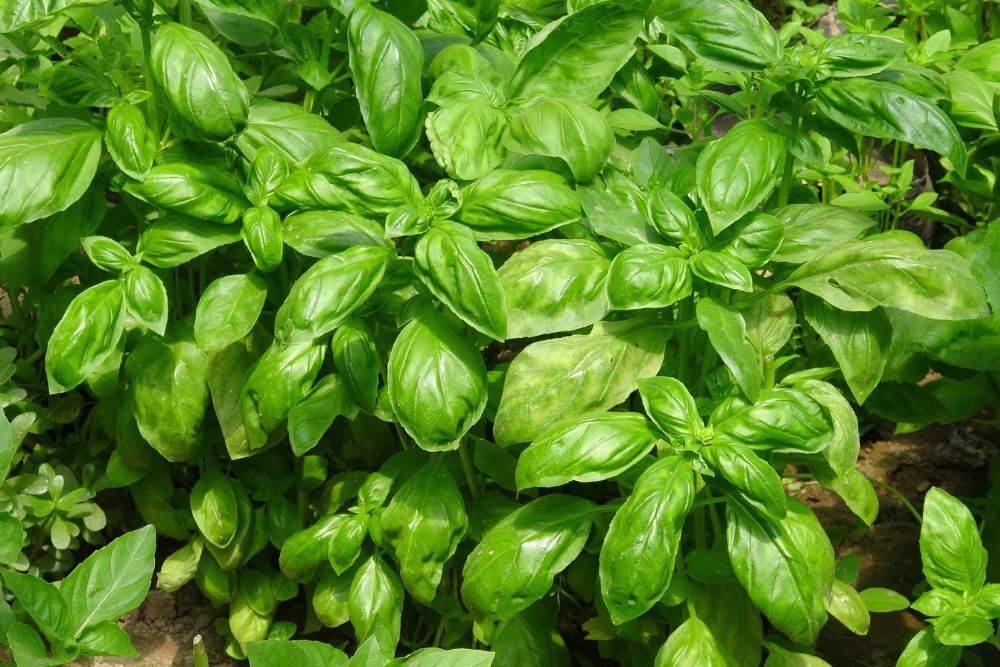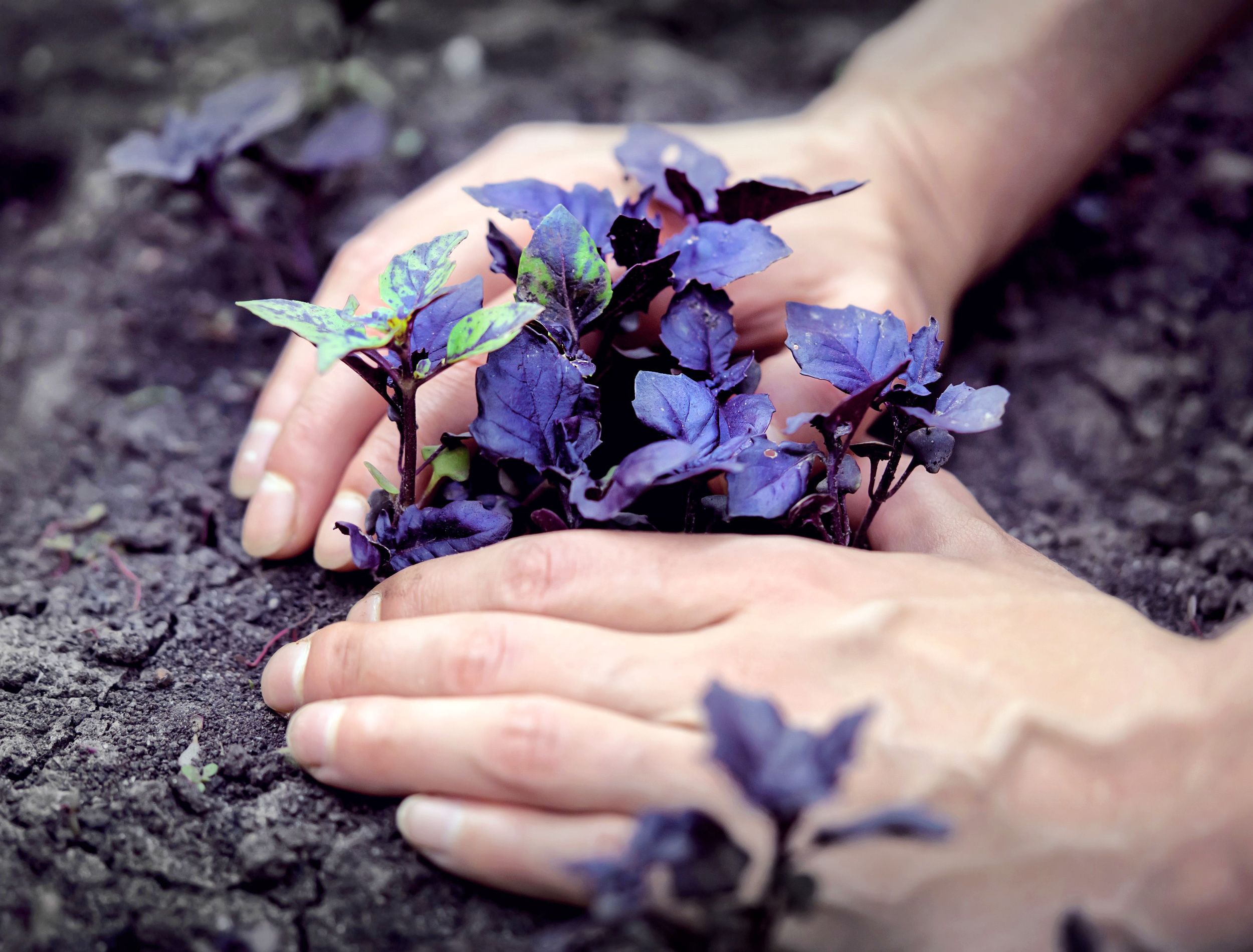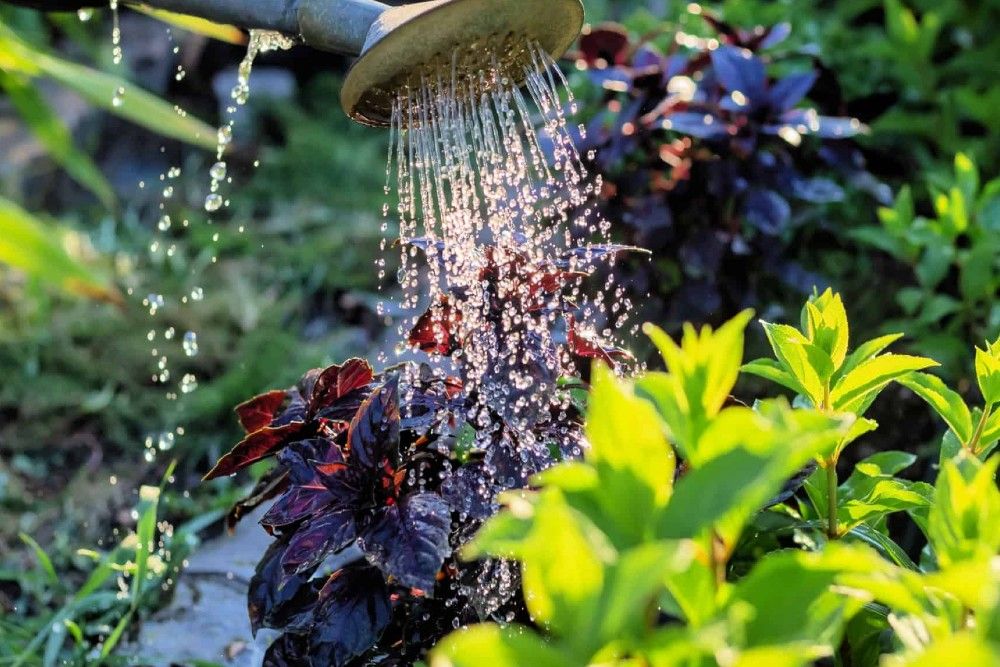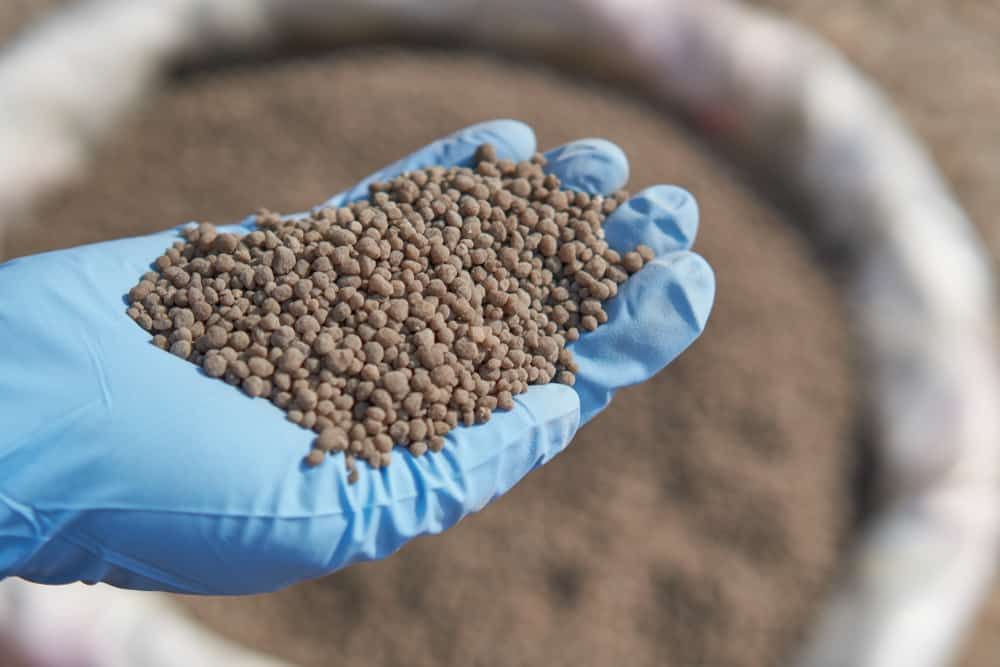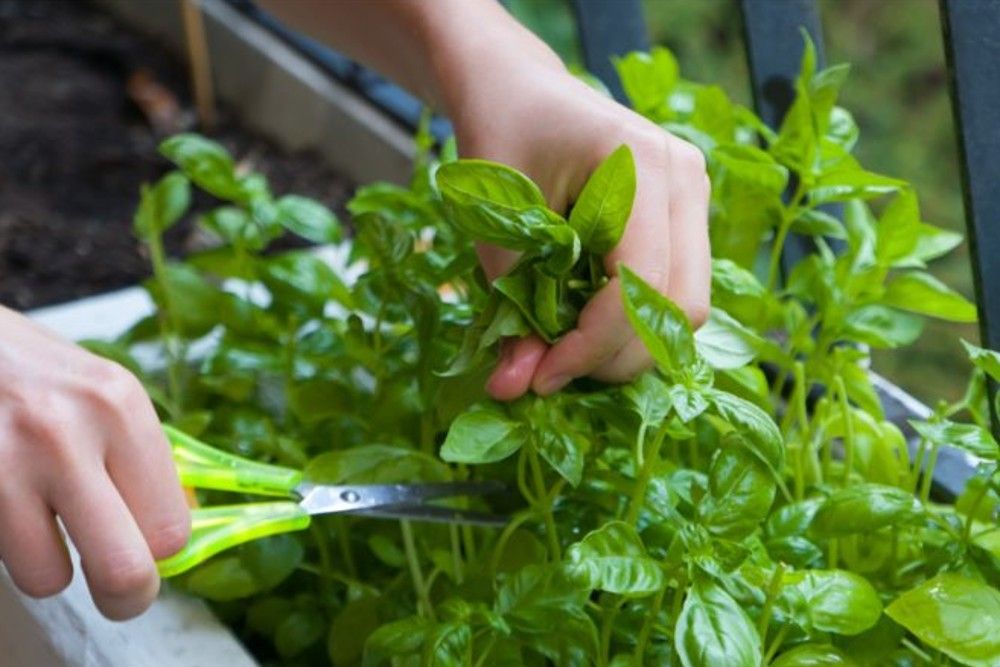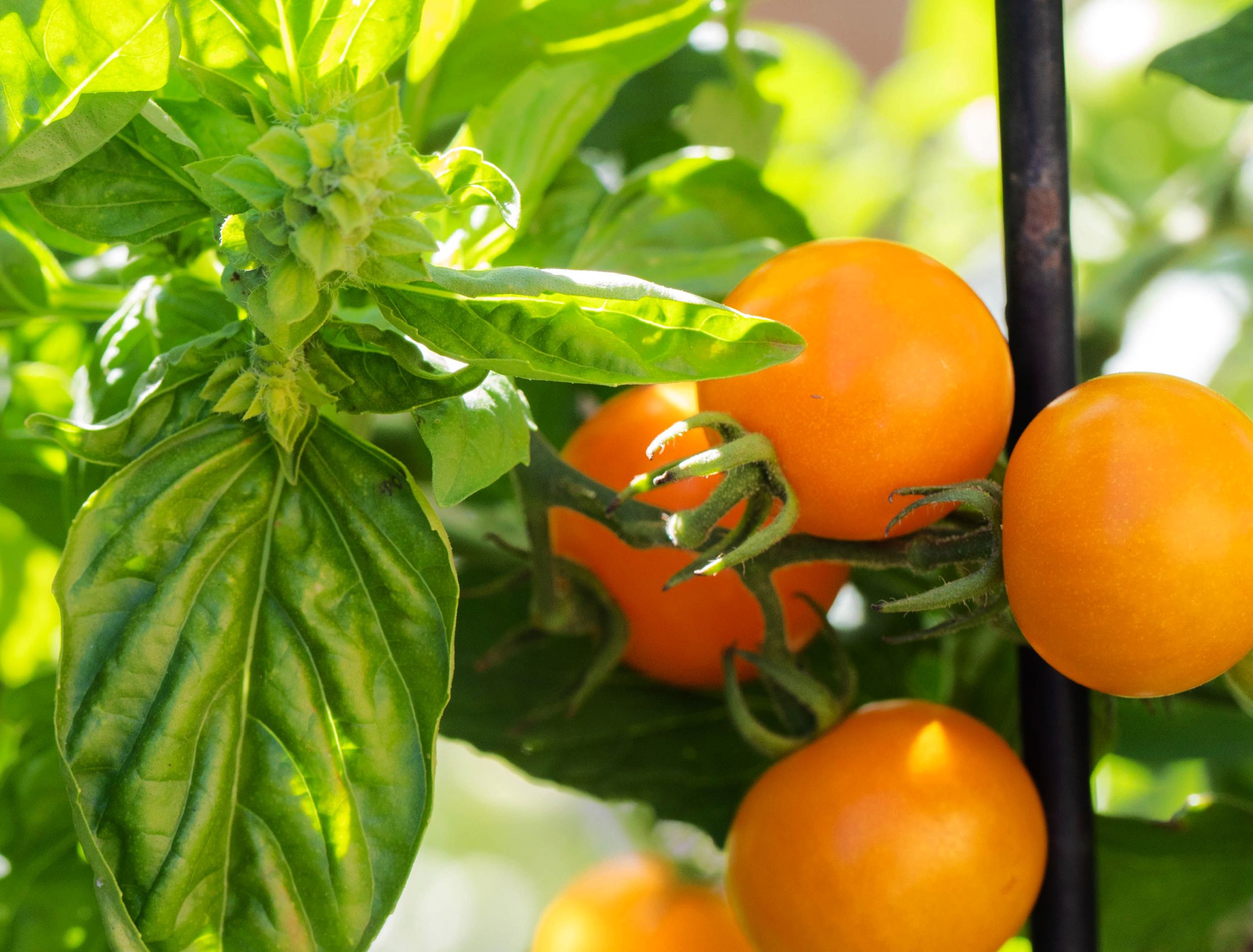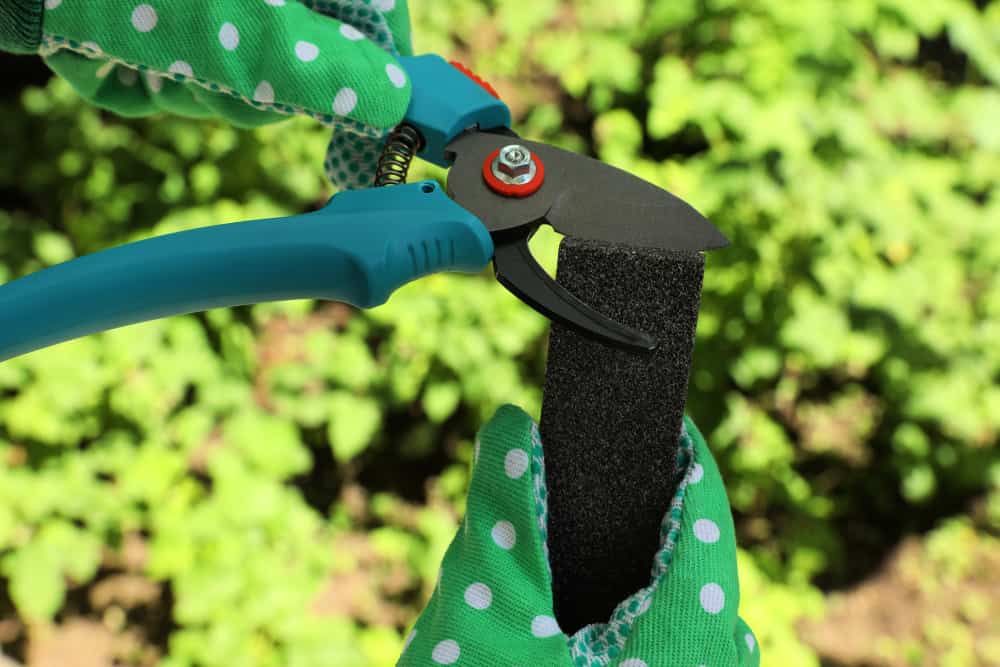Basil is an aromatic herb that's a favorite among home gardeners! To help you grow thriving basil with maximum size and flavor this summer, you can add a few key steps to your plant care routine. Discover seven tips for growing big and beautiful basil plants in your home garden!
1. Keep It in a Sunny Spot
Image credits: Jing via Pixabay
Basil loves to live in a bright and sunny spot with at least six to eight hours of sunlight daily. If you’re still planning your garden, keep this in mind as you organize where you’ll plant all of your herbs and veggies.
If you’ve already planted your basil and notice it’s in a spot that receives only partial sun, basil will tolerate being transplanted to a new location. Just be sure to do this once the plant has reached at least 3 to 4 inches in height. By then, it will have established a sturdy root system, which will help it adapt to its new home.
2. Make Sure Your Soil Is Well-Draining
Image credits: africa_pink via Shutterstock
Basil plants appreciate soil that’s fertile and drains well. Plant it on a raised mound to help ensure that your basil is not sitting in waterlogged soil where it will drown. Doing so ensures your basil gets the water it needs while allowing excess amounts to flow to the lower areas of your garden bed.
Also, adding compost to your soil improves its air capacity and water transport capability. This is especially important if you’ve got dense and clay-rich soil in your garden bed.
3. Don’t Water the Leaves
Image credits: MALAKHOVSKIY via Shutterstock
Your basil will most benefit from watering when you direct the water flow onto its roots versus its leaves. Basil root systems need a thorough soaking to help support fast and productive growth. If the water splashes onto leaves, it’s likely to get diverted, and your basil won’t get the drink it needs. Basil requires about 1 ½ inches of water each week. Without this amount, it may start wilting, and its growth will be stunted.
Pro Tip: To help keep the soil consistently moist without drowning your plant, try a drip irrigation watering system. This is a great way to conserve water while keeping your plants happy and hydrated!
4. Feed It With Fertilizer
Image credits: Criniger kolio via Shutterstock
To help your basil grow large and flavorful leaves, feed it with a nitrogen or phosphorus-rich fertilizer (5-10-5 or 10-5-5) every two to three weeks. Doing so helps your basil avoid nutrient deficiencies and become more resilient against wilting or yellowing leaves. Nitrogen also supports abundant and fast growth of stems and leaves. Phosphorus promotes root development, and potassium helps the plant resist disease and potential drought.
5. Harvest Frequently
Image credits: DarwelShots via Shutterstock
When your basil reaches at least 6 inches in height, start harvesting its leaves. Harvesting is essential to support a thriving plant because it helps encourage new growth. Once summer temperatures reach 80 degrees Fahrenheit, this optimal temperature for basil speeds up its leaf development.
Collect leaves first thing in the morning when they are the freshest and most flavorful. You can do this on a weekly or bi-weekly basis. Just ensure you don't harvest more than 20 percent of your basil plant at a time. Doing so help ensures the basil has enough energy and strength to continue developing healthily.
6. Take Advantage of Companion Planting
Image credits: Molly Shannon via Shutterstock
Basil benefits enormously from companion planting, which is planting it beside certain veggies with which it will develop a symbiotic -- or mutually beneficial -- relationship. For example, tomatoes make great garden companions to basil because their large leaves and long stems provide a substantial amount of shade, which is essential to basil roots. This shade helps the garden soil retain much-needed moisture. In turn, basil repels pests that commonly attack tomatoes, like whiteflies. Other companion veggies you should consider planting with your basil include bell peppers, parsley, asparagus, and garlic.
7. Prune Thoroughly
Image credits: New Africa via Shutterstock
Pruning your basil is an essential step in your plant care routine, as it helps strengthen the stems and encourages new viable growth. Make sure to prune your basil only once it reaches a height of about 6 inches. This more mature stage will ensure that it properly recovers and regrows from your cut.
When pruning, keep the larger basal stems intact. They are necessary to keep because they are the main nutrient transport pathways that connect the roots to the rest of the plant. Leave any new growth alone and focus your trimming on the higher sprigs and stems. Remember to use sharp garden shears when you prune so you don't damage the plant!
Bountiful Basil
Basil is an aromatic and delicious herb you can easily grow in your garden this summer! These seven tips will elevate your gardening game and grow thriving and bountiful basil in no time.
Have any more backyard basil-growing tips you’d like to share with other home gardeners? Put them in the comment section below!

